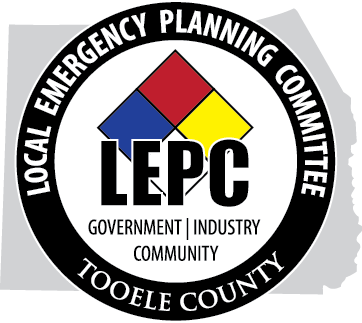
The purpose of the SERC-TERC Updates is to identify and share new policies, guidance, and training resources that may be useful to the State Emergency Response Commissions (SERCs) and Tribal Emergency Response Commissions (TERCs). As a result of the recently released Report for the President on Chemical Facility Safety and Security, per Executive Order 13650, more guidance and information will be provided and available to SERCs/TERCs. This monthly update is an effort by key federal agencies to ensure all pertinent information on chemical facility safety and security is shared with you in a timely manner.
If you have any comments on this Update, please let us know: SERC-TERC.Updates@epa.gov.
Chemical Safety & Security Today
- Executive Order 13650: Improving Chemical Facility Safety and Security https://www.osha.gov/chemicalexecutiveorder/index.html
Regulatory and Policy Information related to Chemical Safety & Security
- EPA Request for Information (RFI) status update
- The Risk Management Program (RMP) RFI seeks comment on potential revisions to EPA’s RMP regulations and related programs to modernize its regulations, guidance, and policies as required under Executive Order (EO) 13650: Improving Chemical Facility Safety and Security.
- Public comments must be received on or before October 29, 2014: https://www.federalregister.gov/articles/2014/07/31/2014-18037/accidental-release-prevention-requirements-risk-management-programs-under-the-clean-air-act-section
- For general information: http://www.epa.gov/emergencies/eo_improving_chem_fac.htm
- DHS ANPRM (Advance Notice of Proposed Rulemaking)
- DHS is initiating this rulemaking process to help it identify how to make the Chemical Facility Anti-Terrorism Standards (CFATS) program more effective in achieving its regulatory objectives.
- The ANPRM is available for public comment on for before October 17, 2014: https://www.federalregister.gov/articles/2014/08/18/2014-19356/chemical-facility-anti-terrorism-standards
- Listening Sessions: http://www.dhs.gov/cfats-rulemaking.
- Questions about the ANPRM may be directed to cfats@hq.dhs.gov
- OSHA Request for Information (RFI) status update
- OSHA’s Request for Information (RFI) strives to collect information on issues related to modernization of the Process Safety Management standard and related standards necessary to meet the goal of preventing major chemical accidents.
- Received comments may be viewed via Regulations.gov: http://www.regulations.gov/#!docketDetail;D=OSHA-2013-0020
- Comment period closed March 10, 2014: http://www.gpo.gov/fdsys/pkg/FR-2013-12-09/pdf/2013-29197.pdf
- OSHA is reviewing the RFI comments and intends to initiate the Small Business Regulatory Enforcement Fairness (SBFRA) panel to solicit small business input on potential regulatory changes.
Hot Topics
- Portal for Chemical Facility Safety and Security Best Practices
- The Executive Order 13650 Working Group has launched an online forum to capture user-submitted best practices to include methods, techniques, processes, systems, policies, tactics, or approaches that result in successful, productive, safer, and more secure operations of chemical facilities.
- Information on this forum comes from a variety of sources and may range from findings supported by scientific studies to individual operations.
- For more information: https://www.llis.dhs.gov/topics/chemical-facility-safety-and-security
- Contact Information for Federal Explosives Licensees and Permittees
- ATF will provide contact information for federal explosives licensees and permittees (FELs) in each SERC/TERC’s geographic area. We expect to disseminate this information directly to SERC and TERC points of contact within the next two months. This plan was developed partially in response to concerns voiced by explosives industry associations that emphasized the need for more frequent and regular contact with local authorities.
- This information can be further disseminated to first responders and appropriate LEPC/TEPC members to 1) help establish relationships and facilitate better communication between these local responders and the FELs in their areas; 2) assist local responders in discussing FEL explosives storage information for emergency planning and response purposes; and 3) enable local authorities and FELs to discuss and develop training for emergencies involving the explosives plants and storage facilities.
- DHS Requests a SERC Point of Contact
- DHS is interested in sharing certain data elements of the Chemical Facility Anti-Terrorism Standards with SERCs to assist with emergency planning, as well as comparing the data to state data to identify possibly non-compliant facilities.
- Please forward the name, title, email, and phone number of the representative for your SERC to work with DHS on this information exchange. Points of contact should be sent to DHS: CFATS@hq.dhs.gov
- IPAWS: Protecting Life and Property
- DHS and FEMA’s Integrated Public Alert and Warning System (IPAWS) is a modernization and integration of the nation’s alert and warning infrastructure and will save time when time matters most: protecting life and property.
- IPAWS provides public safety officials with an effective way to alert and warn the public about serious emergencies using the Emergency Alert System (Radio and Television Broadcast), Wireless Emergency Alerts (Mobile Devices), the National Oceanic and Atmospheric Administration (NOAA) Weather Radio, and other public alerting systems from a single interface.
- Learn more about how you and your colleagues can use IPAWS to benefit your community: www.fema.gov/ipaws.
- Federal Interagency Operational Plans (FIOPs)
- The federal government and its partners publically released three of the five Federal Interagency Operational Plans (FIOPs), as directed inPresidential Policy Directive 8: National Preparedness.
- FIOPs are federal government’s concept of operations documents, built upon the guidance in the National Planning Frameworks.
- DHS encourages you to use Comprehensive Preparedness Guide 101 (CPG 101), Version 2.0: Developing and Maintaining Emergency Operations Plans for your planning.
- CPG 101 provides general guidelines on developing emergency operations plans (EOP) and decision-making fundamentals to help examine hazards and produce integrated, coordinated, and synchronized plans. You can download CPG 101: http://www.fema.gov/plan.
Emergency Operations, Planning, & Technical Support
- Planning Support through Technical Assistance
- FEMA offers planning support through the Preparedness Technical Assistance (TA) Program.
- Commissions and communities needing support to develop or update plans can request the following types of technical assistance: information resources; models, templates, and samples; and onsite workshops.
- Find additional information on the Preparedness TA Program as well as instructions for requesting TA through your State Administrative Agency at http://www.fema.gov/national-incident-management-system/fema-technical-assistance-division.
- Please contact FEMA at NPD-Planning@fema.dhs.gov with any questions regarding questions emergency operations planning guidance or technical assistance.
Training Opportunities & Conferences
- NASTTPO 2014 Midyear Workshop, October 14-16: http://nasttpo.com/mid-year.html
For More Information
- EPCRA: http://www2.epa.gov/epcra
- RMP: http://www2.epa.gov/rmp
- Critical Infrastructure / Chemical Security: http://www.dhs.gov/critical-infrastructure-chemical-security
- CFATS: https://www.dhs.gov/risk-chemical-facility-anti-terrorism-standards-cfats
- EO Lessons Learned Information Sharing : https://www.llis.dhs.gov/topics/chemical-facility-safety-and-security
- NASTTPO: http://nasttpo.com/

